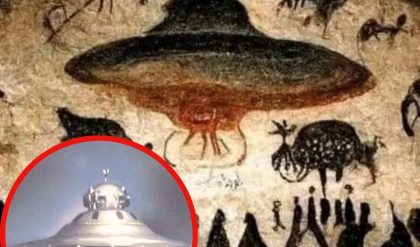For centuries, sailors have recounted chilling tales of encountering mysterious beings—half-human, half-fish—blessed with ethereal beauty and haunting voices. These siren songs, as described, could either spell doom for the hapless listener or serve as a harbinger of impending storms, warning sailors to prepare for turbulent seas. This duality—a mixture of allure and danger—has cemented mermaids as one of the most enduring myths in human history.
Yet, mermaid lore is not confined to a single culture or geography. Across millennia, civilizations from the Near East to Africa, and Asia have etched these enigmatic beings into their mythologies. Could this widespread belief hint at a shared truth? Or is it merely the creation of sailors whose prolonged isolation at sea played tricks on their weary minds?

From Mythical Roots to Alleged Encounters
The first recorded depiction of a mermaid dates back to ancient Assyria, where the goddess Atargatis reportedly transformed into a half-fish creature after a tragic accident. Overwhelmed by guilt for unintentionally causing her lover’s death, she shed her human legs for a shimmering tail but retained her divine beauty. Atargatis became the prototype for mermaid imagery—seductive yet sorrowful. However, as beautiful as this tale is, it raises the question: how much of this narrative is pure myth, and how much could be rooted in reality?
Historical accounts suggest a starkly different image of mermaids. In 1493, Christopher Columbus documented an encounter off the coast of Hispaniola, describing them as humanoid but far from the enchanting beings depicted in art. He noted their distinctly human-like faces, which he found unappealing compared to the idealized beauty of lore. Similarly, the 1635 publication Speculum Mundi by English minister John Swan delved into the behaviors of mermaids. Swan described them as surprisingly assimilated into human-like activities—dressing in fine clothes, wandering among people, and listening to conversations, though they never spoke themselves.

The Scientific and Cultural Pursuit of Truth
The mermaid phenomenon captivated not only sailors but also scientists and journalists of their time. Attempts to verify these claims led to extensive investigations. Witness testimonies were collected, and accounts were scrutinized. Yet, despite all efforts, no definitive proof of mermaids was ever uncovered. Intriguingly, this lack of evidence only fueled the mystique. The tales multiplied, transcending continents and cultures, leaving behind a trail of unanswered questions.
Mermaids in the Modern Imagination
Why does the myth of mermaids endure? Perhaps it is their duality—half of one world, half of another—that speaks to humanity’s fascination with the unknown. Their stories bridge the realms of mythology, science, and superstition, inviting endless speculation. In the modern era, the legend of mermaids has evolved through literature, art, and media, from Hans Christian Andersen’s The Little Mermaid to the sirens of popular fantasy films. Yet, the question remains: are mermaids purely a figment of collective imagination, or could they represent a long-forgotten truth?

A Personal Perspective
The universality of mermaid myths across cultures is too significant to dismiss as mere coincidence. While many historical accounts could be attributed to misidentifications of marine life or hallucinations, the persistence of the mermaid archetype suggests a deeper resonance in human consciousness. Could these myths stem from ancient memories of real, albeit now-extinct, aquatic beings? Or do they symbolize something more profound—our longing to understand the mysteries of the deep?
The allure of mermaids lies in their ambiguity. They remind us of the vast, uncharted waters that cover our planet and the secrets they may hold. Whether as myth or reality, mermaids continue to captivate the human imagination, a timeless reminder of the ocean’s enigmatic beauty and peril.





